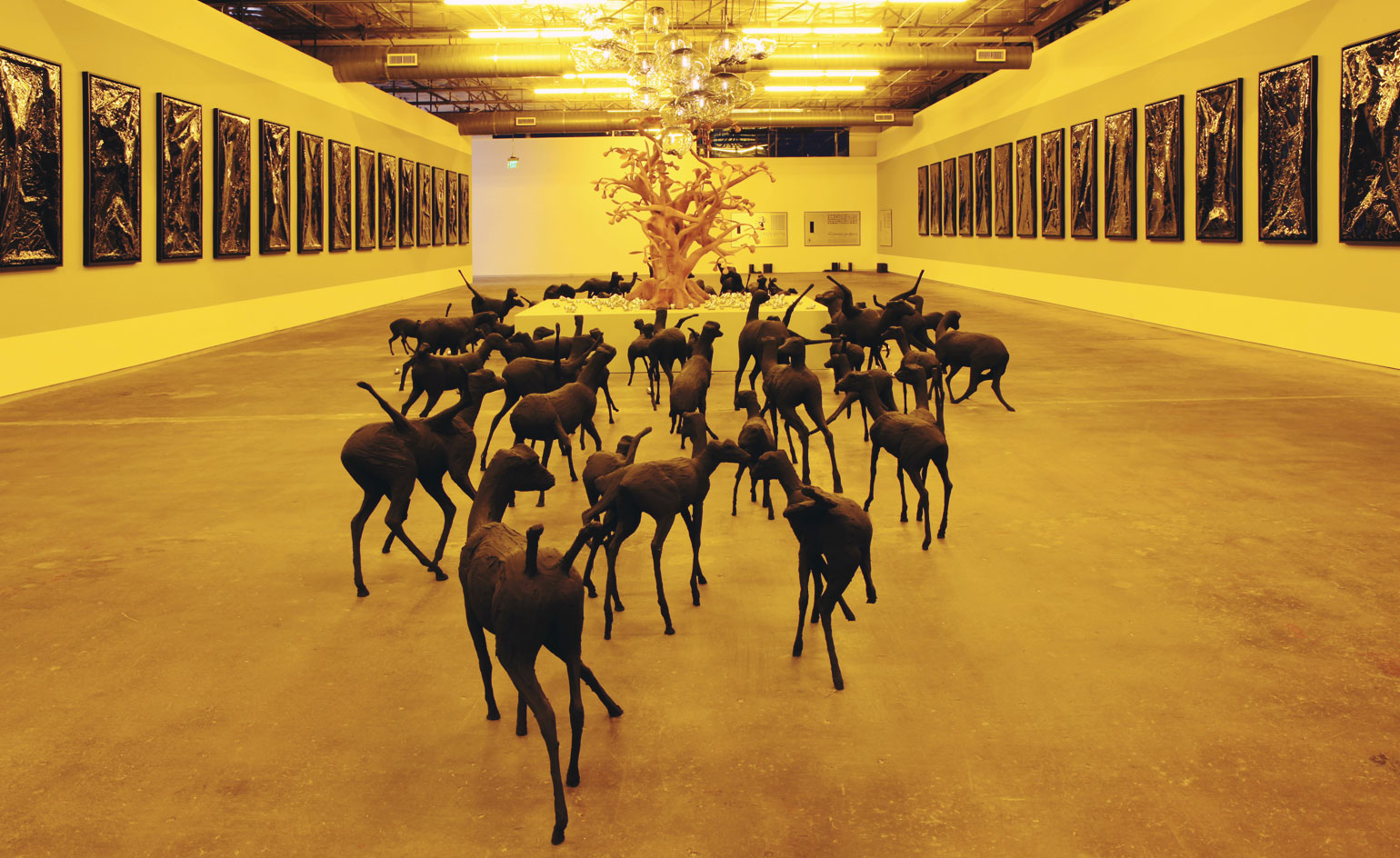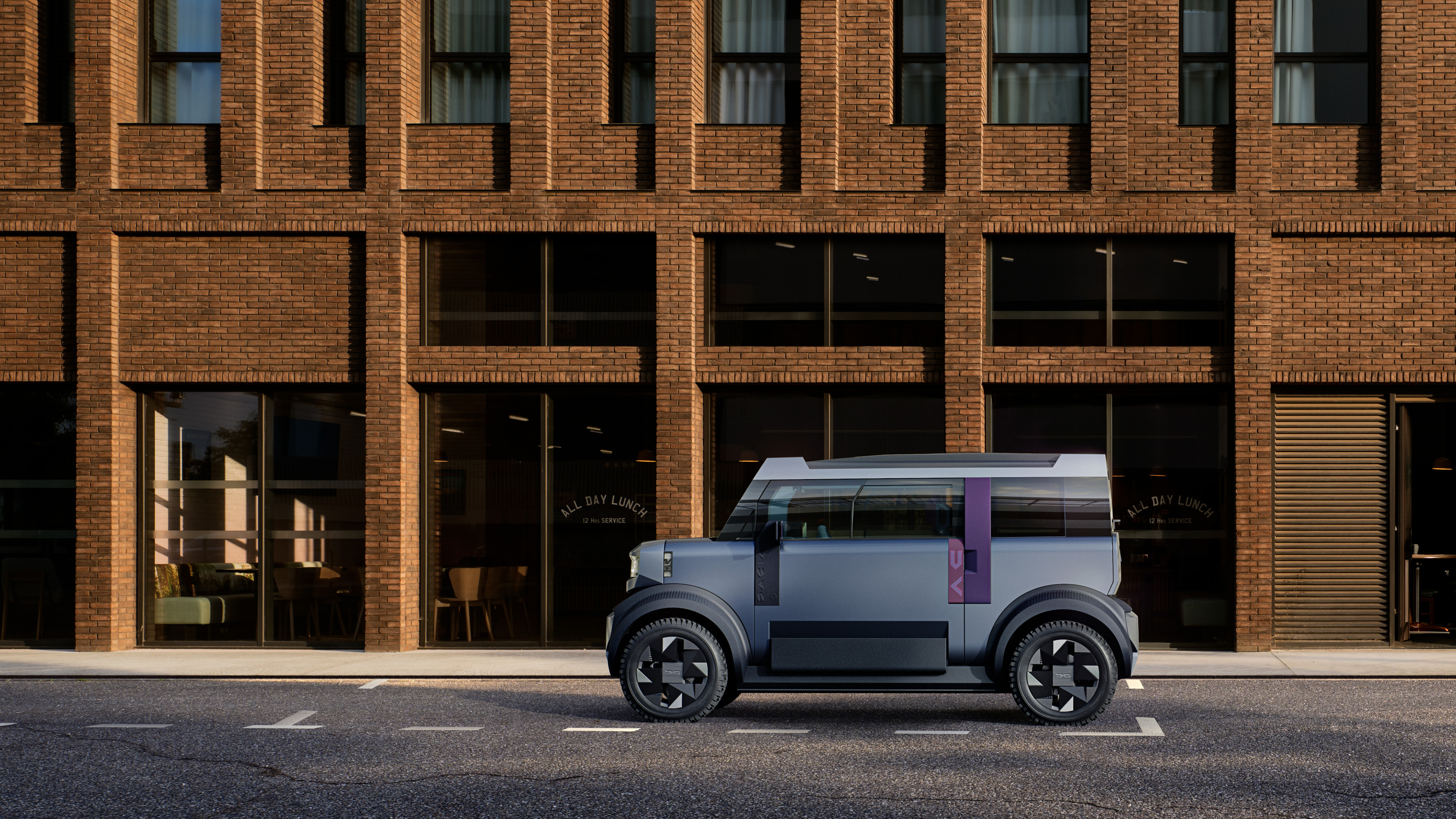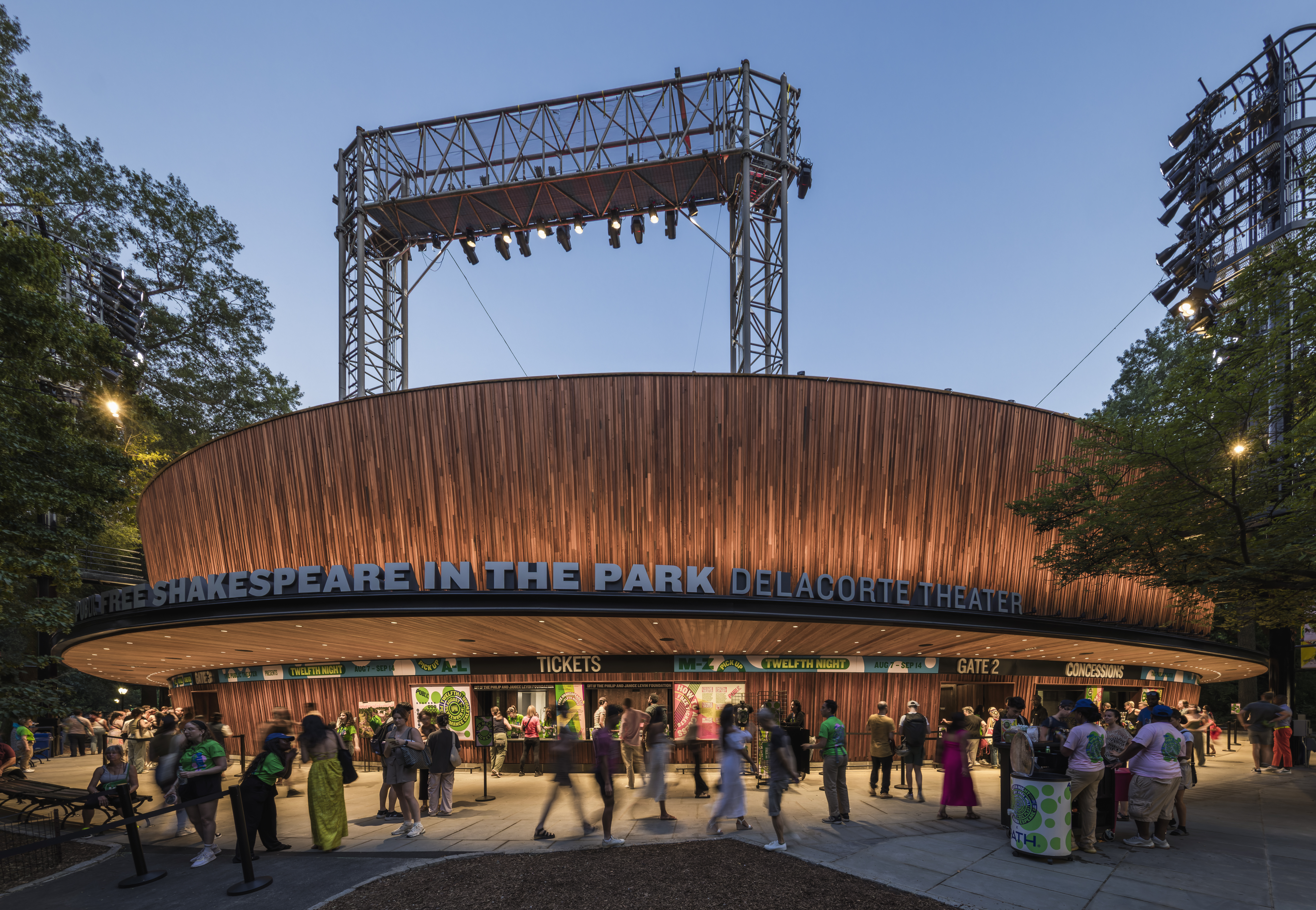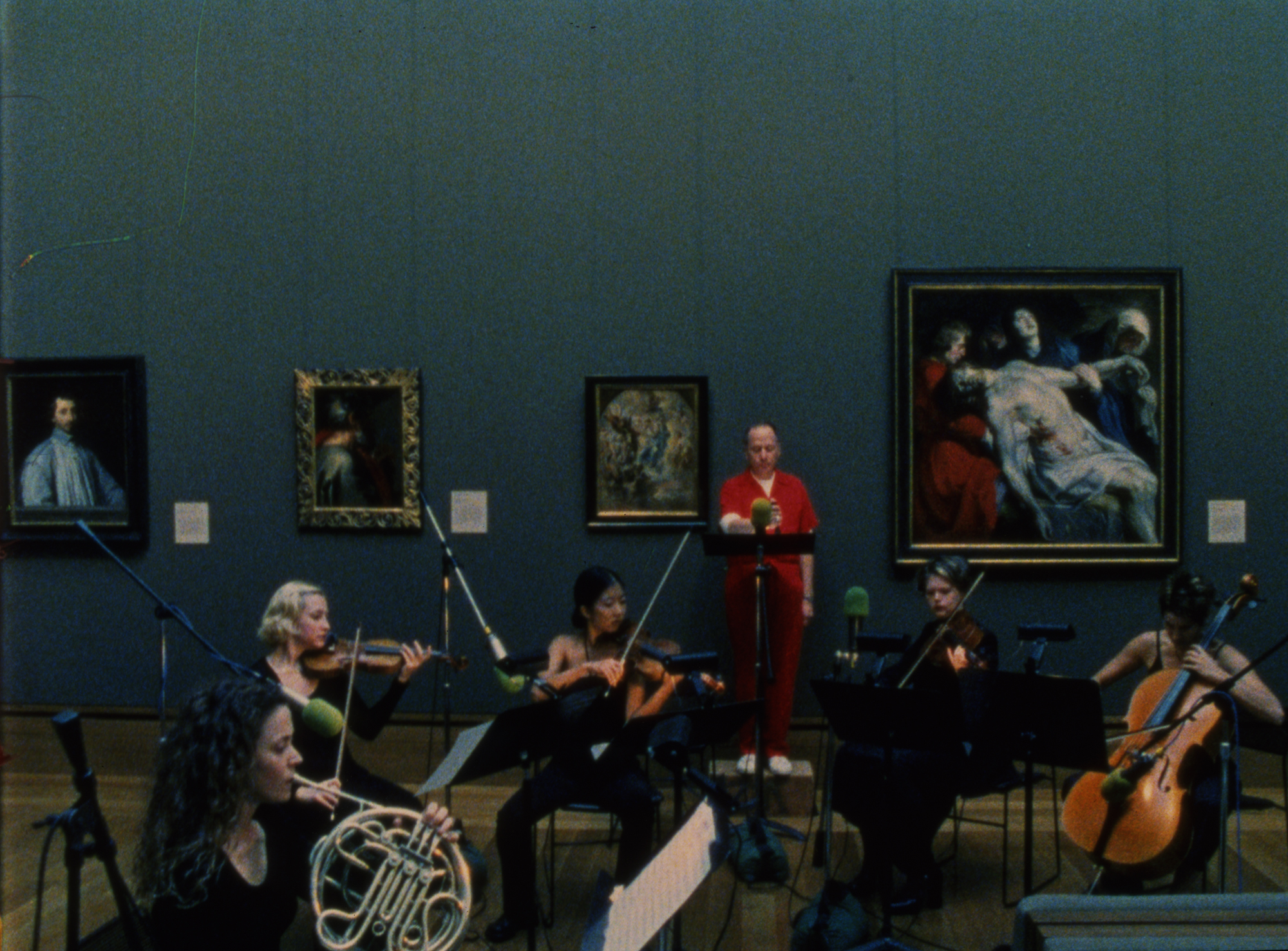Loris Gréaud's trail of destruction at Dallas Contemporary

What would you do if you witnessed a piece of art being destroyed? It's this exact unnerving situation that the French conceptual artist Loris Gréaud put his guests through during the unveiling of his first major US exhibition, 'The Unplayed Notes Museum', at Dallas Contemporary. At the opening, the show - which occupies the institution's entire 26,000 sq ft space and spans sculpture, paintings and film - was destroyed by a band of seemingly normal guests - just as Gréaud had planned.
'I wanted to create a museum within a museum,' says Gréaud of the anarchistic concept, which saw the gallery's alarms go off and lights shut down as people violently overturned works, defaced paintings and smashed sculptures. He continues: '[The destruction] is a nihilistic gesture, but its more than just commenting on the art world. It's a way for people to confront their feelings of fear and desire. We've all wanted to act out, revolt and destroy something.'
Working with actors and stuntmen, Gréaud carefully choreographed the destruction that would take place in mere minutes, with numerous rehearsals taking place in the weeks running up to the big reveal. Of course, Gréaud first had to fill Dallas Contemporary's five gallery spaces, which he did with real work made over the course of a year.
Gréaud sought to create a new natural history museum of sorts and his creations weave together elements of botany, sexuality, chemistry and zoology. From a herd of unrecognisable animals surrounding a tree from Vietnam, its roots exposed in the air, to a brooding group of abstracted classical statues, the exhibit is pure Gréaud, whose work has consistently manifested itself as fearless, and mutli-faceted experiences. A cluster of towering angels, each six metres tall, stand in a stoic circle in one gallery. One lies smashed on the floor.
Speaking to us a few days before the opening night's debauchery, Gréaud said, 'I feel really proud of the work now that the installation is finished,' admitting that he was anxious about what would happen on the evening itself, despite having the full support of Dallas Contemporary. 'We destroyed one piece during a rehearsal, and it was really painful,' he says.
Post-destruction, the untouched exhibition is a provocative reaffirmation of the intentions and events of that one night. 'More important than the event is what's left,' Gréaud said after, stating that his ultimate intention was to focus on the show's two opposing states: perfection and destruction. Asked whether he would do it again, Gréaud's answer is a prompt no.

On the opening night, the show - which occupies the institution's entire 26,000 sq ft space and spans sculpture, paintings and film - was destroyed by a band of seemingly normal guests

Gréaud first had to fill Dallas Contemporary's five gallery spaces, which he did with real work made over the course of a year

'I wanted to create a museum within a museum,' says Gréaud of the anarchistic concept, which saw the gallery's alarms go off and lights shut down as people violently overturned works, defaced paintings and smashed sculptures

The artist sought to create a new natural history museum of sorts and his creations weave together elements of botany, sexuality, chemistry and zoology

In one gallery, a cluster of towering angels, each six metres tall, stand in a stoic circle...

...while one lies smashed on the floor

Working with actors and stuntmen, Gréaud carefully choreographed the destruction that would take place in mere minutes

Says the artist: '[The destruction] is a nihilistic gesture, but its more than just commenting on the art world. It's a way for people to confront their feelings of fear and desire. We've all wanted to act out, revolt and destroy something.'

Post-destruction, the exhibition will remain untouched for its entire run. What is left is more important than the event itself in the eyes of Gréaud
ADDRESS
Dallas Contemporary
161 Glass Street
Dallas TX 75207
United States
Receive our daily digest of inspiration, escapism and design stories from around the world direct to your inbox.
Pei-Ru Keh is a former US Editor at Wallpaper*. Born and raised in Singapore, she has been a New Yorker since 2013. Pei-Ru held various titles at Wallpaper* between 2007 and 2023. She reports on design, tech, art, architecture, fashion, beauty and lifestyle happenings in the United States, both in print and digitally. Pei-Ru took a key role in championing diversity and representation within Wallpaper's content pillars, actively seeking out stories that reflect a wide range of perspectives. She lives in Brooklyn with her husband and two children, and is currently learning how to drive.
-
 Year in review: the shape of mobility to come in our list of the top 10 concept cars of 2025
Year in review: the shape of mobility to come in our list of the top 10 concept cars of 2025Concept cars remain hugely popular ways to stoke interest in innovation and future forms. Here are our ten best conceptual visions from 2025
-
 These Guadalajara architects mix modernism with traditional local materials and craft
These Guadalajara architects mix modernism with traditional local materials and craftGuadalajara architects Laura Barba and Luis Aurelio of Barbapiña Arquitectos design drawing on the past to imagine the future
-
 Robert Therrien's largest-ever museum show in Los Angeles is enduringly appealing
Robert Therrien's largest-ever museum show in Los Angeles is enduringly appealing'This is a Story' at The Broad unites 120 of Robert Therrien's sculptures, paintings and works on paper
-
 Nadia Lee Cohen distils a distant American memory into an unflinching new photo book
Nadia Lee Cohen distils a distant American memory into an unflinching new photo book‘Holy Ohio’ documents the British photographer and filmmaker’s personal journey as she reconnects with distant family and her earliest American memories
-
 Ed Ruscha’s foray into chocolate is sweet, smart and very American
Ed Ruscha’s foray into chocolate is sweet, smart and very AmericanArt and chocolate combine deliciously in ‘Made in California’, a project from the artist with andSons Chocolatiers
-
 Jamel Shabazz’s photographs are a love letter to Prospect Park
Jamel Shabazz’s photographs are a love letter to Prospect ParkIn a new book, ‘Prospect Park: Photographs of a Brooklyn Oasis, 1980 to 2025’, Jamel Shabazz discovers a warmer side of human nature
-
 The Hammer Museum in Los Angeles launches the seventh iteration of its highly anticipated artist biennial
The Hammer Museum in Los Angeles launches the seventh iteration of its highly anticipated artist biennialOne of the gallery's flagship exhibitions, Made in LA showcases the breadth and depth of the city's contemporary art scene
-
 Thomas Prior’s photography captures the uncanny fragility of American life
Thomas Prior’s photography captures the uncanny fragility of American lifeA new book unites two decades of the photographer’s piercing, uneasy work
-
 Central Park’s revitalised Delacorte Theater gears up for a new future
Central Park’s revitalised Delacorte Theater gears up for a new futureEnnead Architects helmed an ambitious renovation process that has given the New York City cultural landmark a vibrant and more accessible future
-
 Stephen Prina borrows from pop, classical and modern music: now MoMA pays tribute to his performance work
Stephen Prina borrows from pop, classical and modern music: now MoMA pays tribute to his performance work‘Stephen Prina: A Lick and a Promise’ recalls the artist, musician, and composer’s performances, and is presented throughout MoMA. Prina tells us more
-
 Curtains up, Kid Harpoon rethinks the sound of Broadway production ‘Art’
Curtains up, Kid Harpoon rethinks the sound of Broadway production ‘Art’He’s crafted hits with Harry Styles and Miley Cyrus; now songwriter and producer Kid Harpoon (aka Tom Hull) tells us about composing the music for the new, all-star Broadway revival of Yasmina Reza’s play ‘Art’